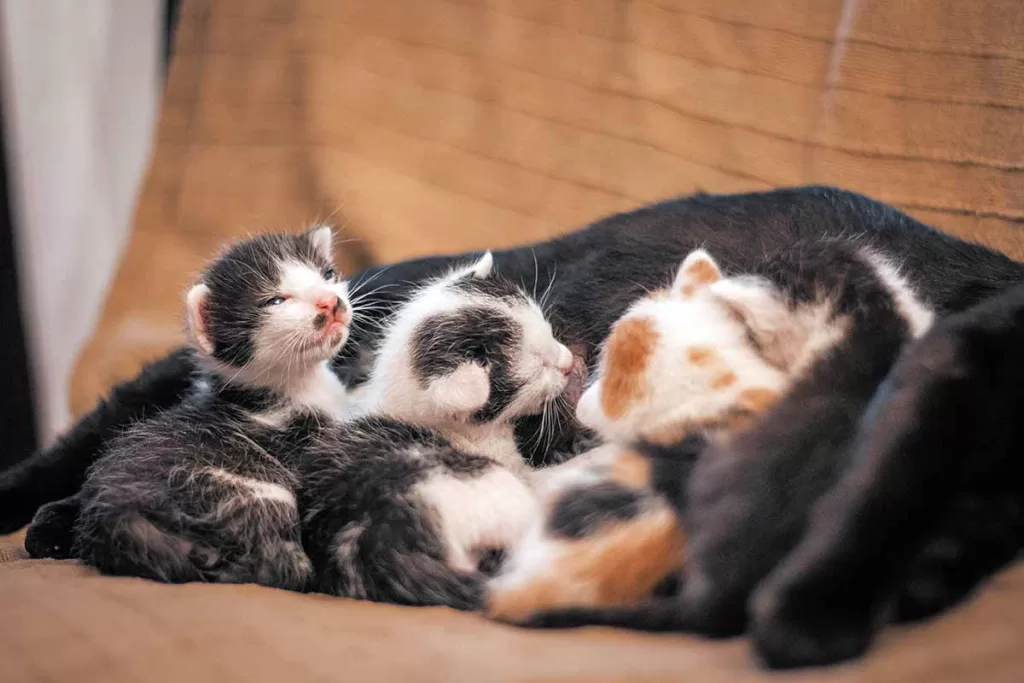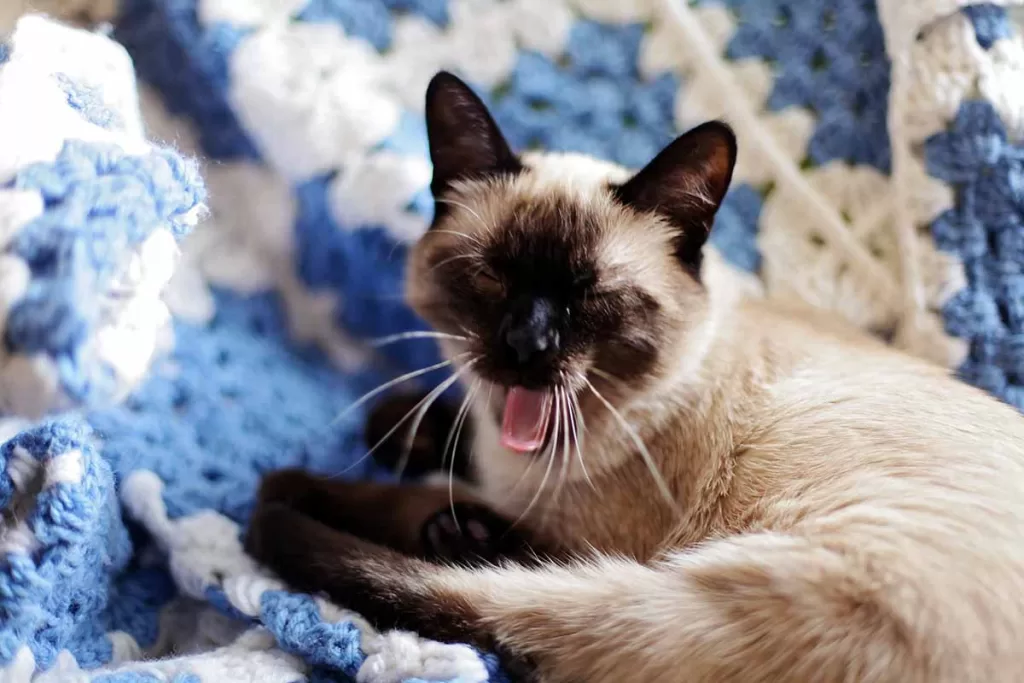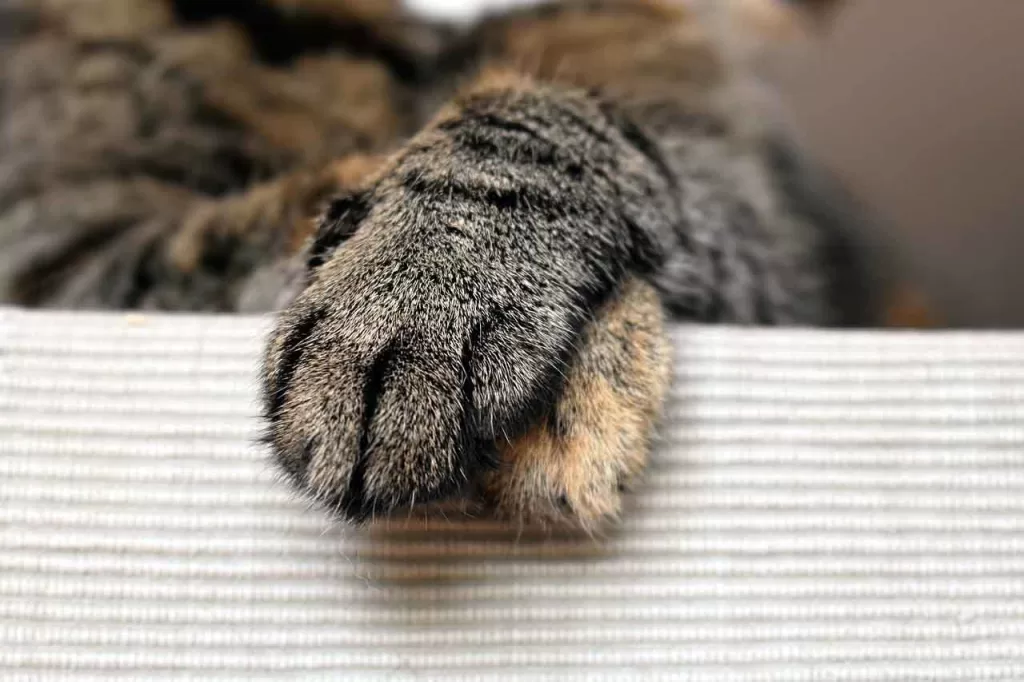Have you ever noticed your cat pushing its paws against a soft, cushioned surface like a blanket or your lap? Chances are they were kneading – also known as “making biscuits” – one of the behaviors cats express when content. But why do cats make biscuits?
It is believed that a cat’s kneading behavior is a remnant of the kneading that kittens do to stimulate their mother’s milk production. In the adult cat, it is usually a sign of comfort, relaxation, and happiness. Cats may also knead to self-soothe, in an attempt to reduce anxiety or stress.
Read on to discover just what causes cats to knead and whether it’s time for an extra helping of cuddles!
What Is Cat Kneading And Why Do Cats Do It
Cat kneading is the process of a cat pressing its front paws against a soft surface, usually accompanied by flexing and extending its claws. It’s often said that cats knead “to make biscuits” because the motion is similar to the kneading of dough used to make bread and biscuits.
The exact reason why cats make biscuits is still largely unknown because, well – who truly knows the mind of a cat? But there are a few theories as to why this behavior occurs.
The Feline Instinct – Understanding Your Cat’s Kneading Behaviors
One hypothesis is that cat kneading has its roots in kittenhood, when nursing kittens knead the mother’s nipples to stimulate milk production. Kneading may later continue as a comfort or familiarity behavior for cats in adulthood.

Another theory is that kneading is used to “mark” territory. Cats have scent glands located in their paws, so when they knead with their front paws, they may be transferring scent from those glands onto the surface – a way of claiming it as their own.
Kneading also seems to be used to show comfort and relaxation. Cats who knead are usually happy cats. This is further supported by the fact that kneading cats are almost always purring at the same time, another sign of relaxation and happiness.
However, kneading is likely also a form of self-soothing for cats – it’s their way of dealing with stress or anxiety. So a cat who is kneading may not be happy and relaxed yet, but it is trying to get there.
Lastly, kneading may be related to an instinctive drive to create a bed or resting place. Cats weren’t always domesticated, and wild cats don’t have doting humans around to make them a nice comfortable bed!
Is Kneading A Sign Of Affection?
The short answer? Yes! Cats who knead often do so as a sign of both physical and emotional comfort. Kneading can mean your cat trusts you enough to relax around you – it’s letting its guard down and showing affection in the process.
It’s also common for cats to knead their human companions or other animals in their lives as a sign of affection. Cats who knead around other animals may be showing them submission or respect – both are signs of friendly relationships.
Overall, cat-kneading is usually seen as a positive behavior that cats perform when they’re feeling content. So if your cat is kneading you, take it as a compliment and enjoy the cuddle!
Of course, not all cats engage in this behavior – some may never make biscuits during their lifetime. But for those that do, there’s a lot of love behind every press of their paws.
What To Do If Your Cat’s Kneading Becomes Excessive
Kneading is generally harmless and can be a soothing behavior for cats to perform. But if your cat’s kneading becomes too frequent or aggressive (i.e. with claws extended), then it’s not going to make you very happy.
It can also irritate other pets in the house, or cause snagging in blankets, furniture, or clothing.

Tips for Redirecting Unwanted Kneading Behaviors
- Try some gentle redirection and distraction techniques. If they start to knead too vigorously, gently move them to a different place and give them something else to focus on, like their favorite toy.
- Try using a feline pheromone spray to attract them to a specific location, such as a thick blanket, where they are allowed to knead to their heart’s content.
- If they insist on kneading on you, cover your lap with a thick blanket so that they are prevented from scratching you. They will also eventually learn that this blanket is a safe place that they are allowed to knead on.
- Keep their claws trimmed to help reduce the damage they can do while kneading.
- Most importantly, be patient and loving with your cat. Do not punish them for what is a very natural behavior.
With time, patience, and consistency, you will eventually be able to redirect their unwanted behaviors into more appropriate activities.
Conclusion
All in all, kneading is a natural and endearing behavior that cats exhibit for many possible reasons: comfort, relaxation, happiness, and sometimes as an attempt to reduce stress and anxiety.
While the exact reason why cats knead may remain a mystery, it’s clear that this action can benefit both its human companions and their feline friends.
Cats serve an important role in our lives, from providing us with emotional support to keeping us on our toes with their ever-strange antics. So be sure to take time out of your day to show your cat some extra love for displays of kneading!



